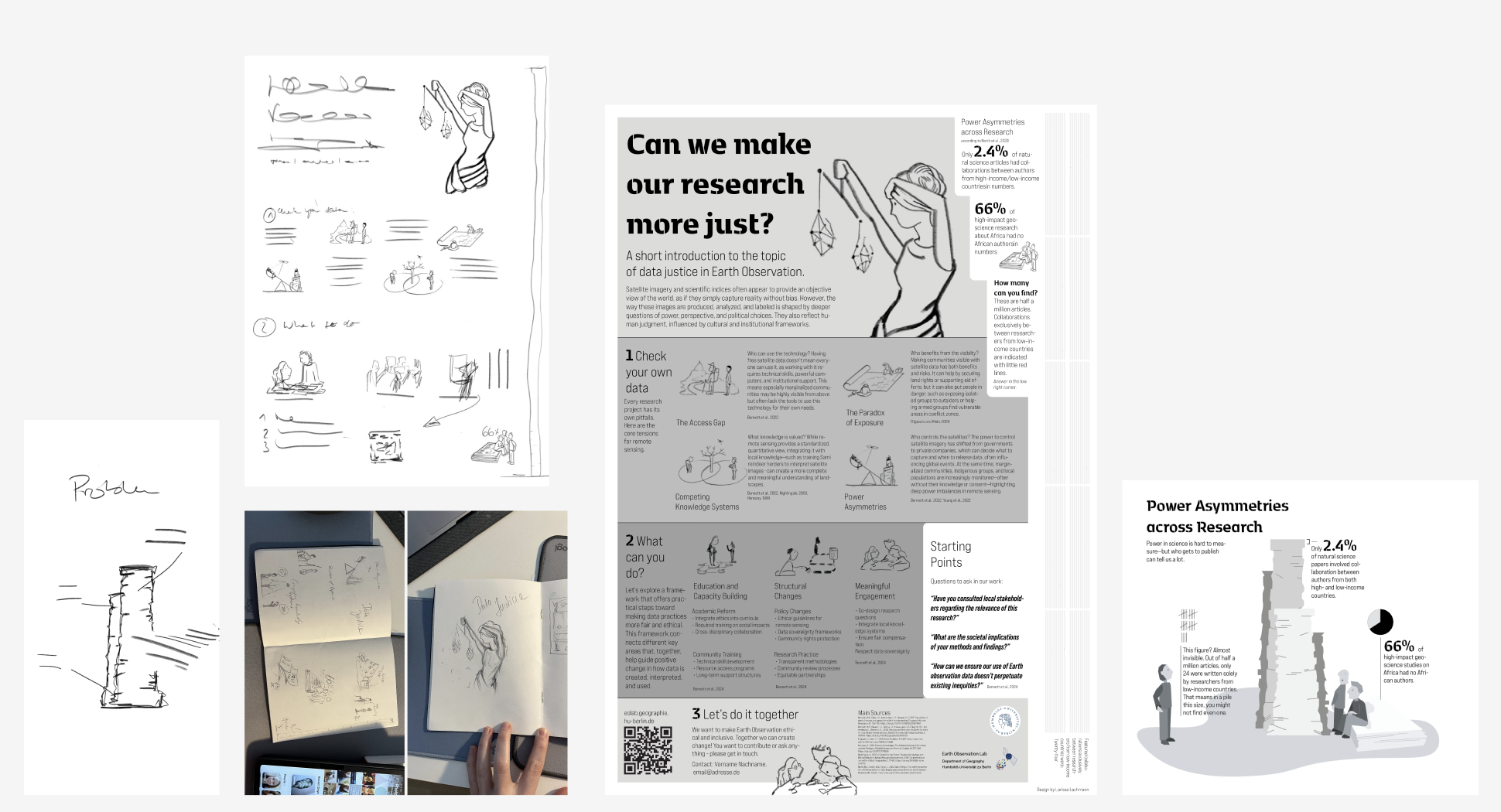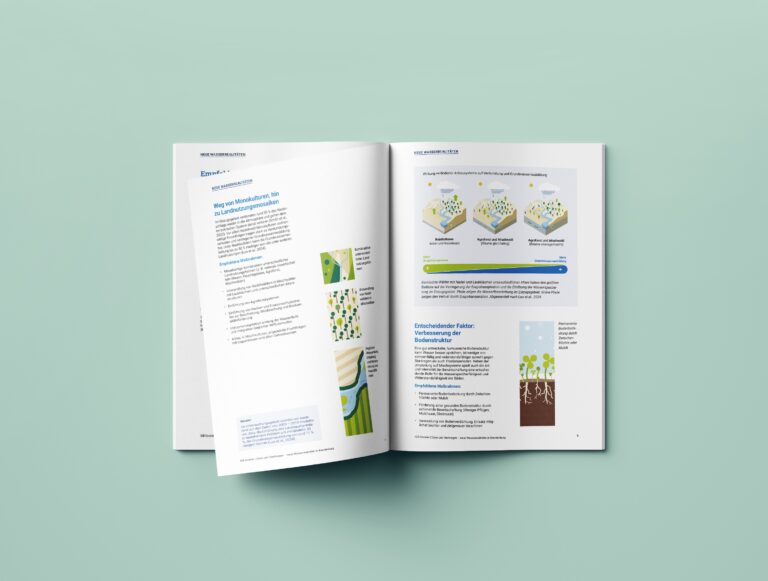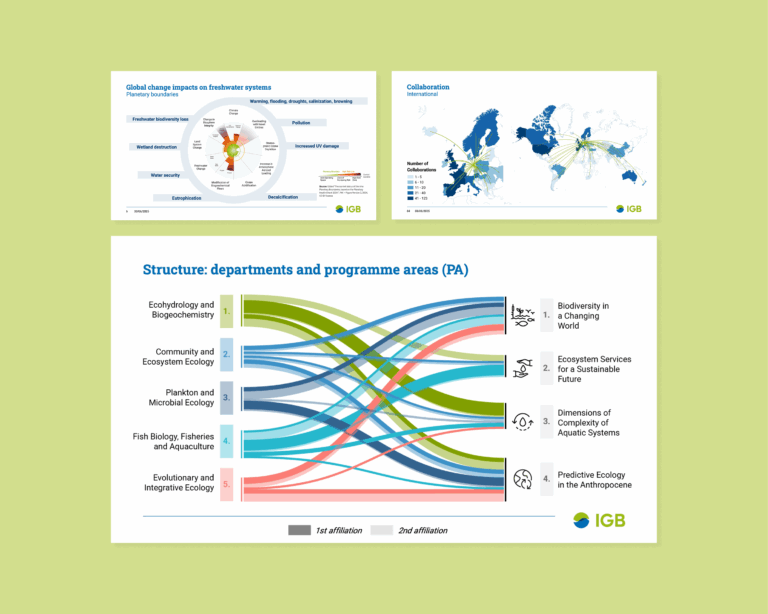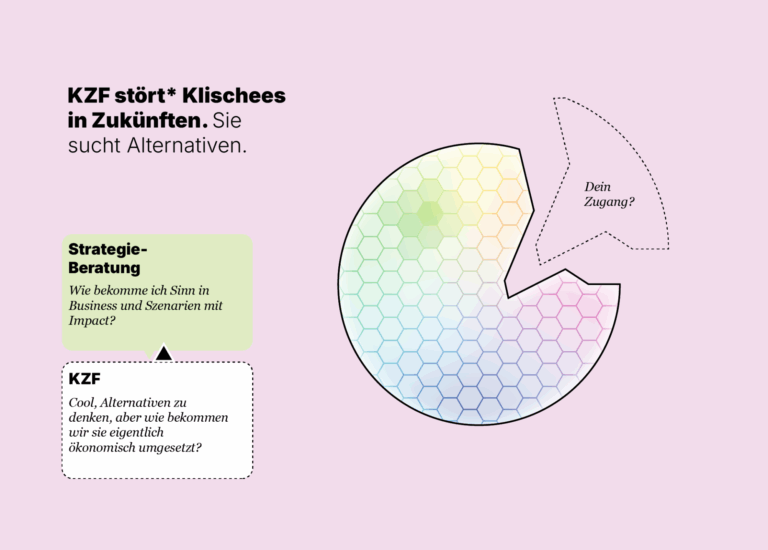Satellite images may appear objective.
but they’re not. Every dataset reflects choices:
Who decides what gets measured? Who controls the data? Whose priorities shape the analysis?
Justice, diversity, and inclusion in science aren’t optional extras. They are essential foundations if we want research that leads to fairer, more meaningful outcomes.
Researchers like PhD Lasse Harkort and Prof. Mia Bennett are among those challenging this field to reflect on ownership, representation, and impact — and to do better.
This poster is a small first step in a broader effort:
Creating guidelines and practical support for scientists working with satellite data — by and for the remote sensing community.
I’m proud to have contributed to this initiative and to help bring more attention to the questions that matter.

Creating research posters can feel exhausting — but it doesn’t have to be.
how does it work to create a Poster together?
- You bring the content — your draft, slides, or notes. No need to spend hours formatting or fiddling with layout.
- I create a first draft — condensing text, structuring your message, and building a strong visual concept.
- We refine it together — you adjust key points, I take care of the polish.
- I handle the technical details — from printing specs to layout quirks, so everything runs smoothly.

I help researchers design posters that don’t just look good — they communicate clearly, save time, and reduce stress.


